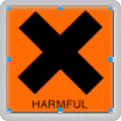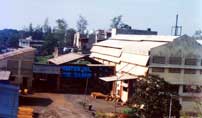




|
|
UPRA CHEM Pvt. Ltd. has been established in the year 1985.
ACTIVITIES of UPRA CHEM Pvt. Ltd.
It manufactures a chemical known as “Anhydrous Aluminium Chloride” (Alcl3) at a site situated in a backward area of
Silvassa, Dadra & Nagar Haveli. This named place falls under Union Territory
of India. The site is about 180 km. from Mumbai and can easily be reached by rail or road in about 3 hours. It is also very near to Industial Zones of Gujarat like Vapi (16 km), Ankleshwar(120 km), Vadodara(200km) and Ahmedabad (325 km) and can be reached by rail and road. Subsequently, in 1992, the production capacity was increased to 7,000 tonnes per year. The present capacity
of teh plant is is 7,000 tonnes per year. Uprachem is already serving its clients in UK, Gemany, Korea, France and many other countries across the globe. (TOP) |
|
|
Anhydrous Aluminium Chloride: Anhydrous Aluminium Chloride is a versatile Inorganic Chemical and finds application in a large number of Organic and Inorganic Chemical Syntheses and Reactions. It is mainly used as Catalyst for the
Chemical, Petrochemical and Pharmaceutical industries as also an auxiliary in the production of dyes and in the paper and textile industries. Nature: Pale/golden yellow or grey crystalline substance. Very hygroscopic. Trade name: Anhydrous Aluminium chloride, Aluminium Chloride, aluminium trichloride Formula: AlCl3 Molar mass: 133.34 g/mol CAS No.: 7446-70-0 EINECS No.: 231-208-1 (TOP) SPECIFICATION: Assay-Purity AlCl3 % : Minimum 99+ % Water Insolubles % : Maximum 0.05 % Non-Volatiles % : Maximum 0.90 % Free Aluminium ppm : Maximum 50 Iron ppm : Maximum 150 Zinc ppm : Maximum 25 Copper ppm : Maximum 25 Lead ppm : Maximum 10 Cadmium ppm : Maximum 5 Potassium ppm : Maximum 10 (Slight variation may occur between the different grades) Particle Size - Grade I : < 2 mm Grade II : 2 mm to 9 mm Grade III : 9 mm to 20 mm Grade IV : 20 mm and above Grade V : Mixed Grade (TOP) Reacts with moisture in the air or water to form hydrogen chloride, which has a pungent odour. Dissolves in alcohols, ethers, esters, and many other polar, organic solvents. In some cases, adducts are formed. Solubility in water (20 °C) 450 g/l Melting point (2.33 bar) 192.5 °C Sublimation point (1.1325 mbar) 181.2 °C Bulk density approx. 1200 kg/m3 pH-value (100 g/l, 20 °C) 2.4 Application In the chemical, petrochemical and pharmaceutical industries:
Leakages of the bundles cause an increase of pressure by reaction of aluminium chloride with air humidity to toxic and corrosive hydrogen chloride. Therefore the bundles have to be controlled in regular
intervals, formed positive pressure that has to be discharged by careful opening of the vent screw. During this operation the personal protection equipment, especially respiratory protection, is to be used (for further information, please have a look to the safety data sheet). The product can be supplied in the following forms:
Can be delivered as follows:
The product is packed in Silsack bags under vacuum condition. This is followed by Nitrogen blanketing and finally the bags are sealed. (TOP) |
|
||
 |
General |
|
|
Physical data Appearance:
Yellow to Grey solid Stable, but reacts violently with water. Prolonged storage may lead to pressure build-up - vent container periodically. Incompatible with alcohols and a variety of other materials (see complete MSDS sheet for full list). Safety Corrosive. Reacts violently with water. Reacts with the humidity of air under formation of pungent smelling hydrogen chloride.
During the handling of these products, the data and reference in the safety data sheet are to be considered. As Anhydrous Aluminium Chloride fumes a lot on exposure to air it is environmentally objectionable. Precautions to address environmental questions should also be considered while handling Risk phrases Safety phrases Corrosive - causes burns. Extremely destructive of mucous membranes. May cause allergic reactions. Harmful if swallowed or inhaled and in contact with the skin. Safety glasses, rubber gloves. Adequate ventilation. FIRST AID:
In cases of splashes of liquid Aluminium Chloride in the eyes, flush immediately and thoroughly with large amounts of water and then rinse with a weak solution of sodium bicarbonate or boric acid. Consult a physician immediately. Transport informationUN No 1726. Packing group II. Major hazard class 8.0. (TOP) |
|
|
Office:
Upra Chem Pvt. Ltd. Upra Chem Pvt. Ltd. Plot No.1, Govt. Industrial Estate, |

